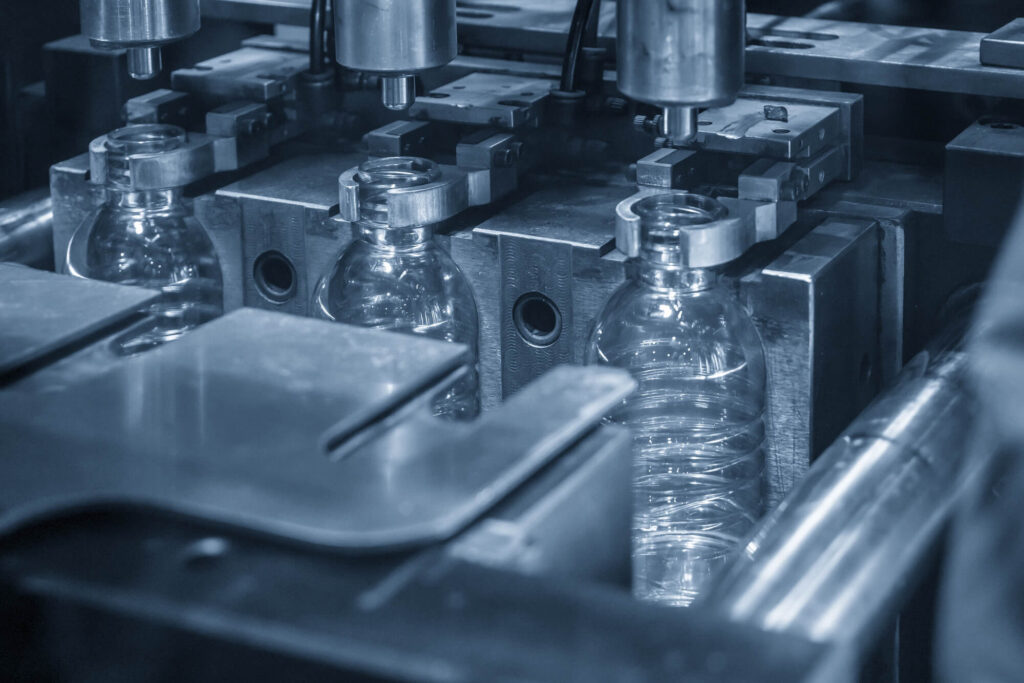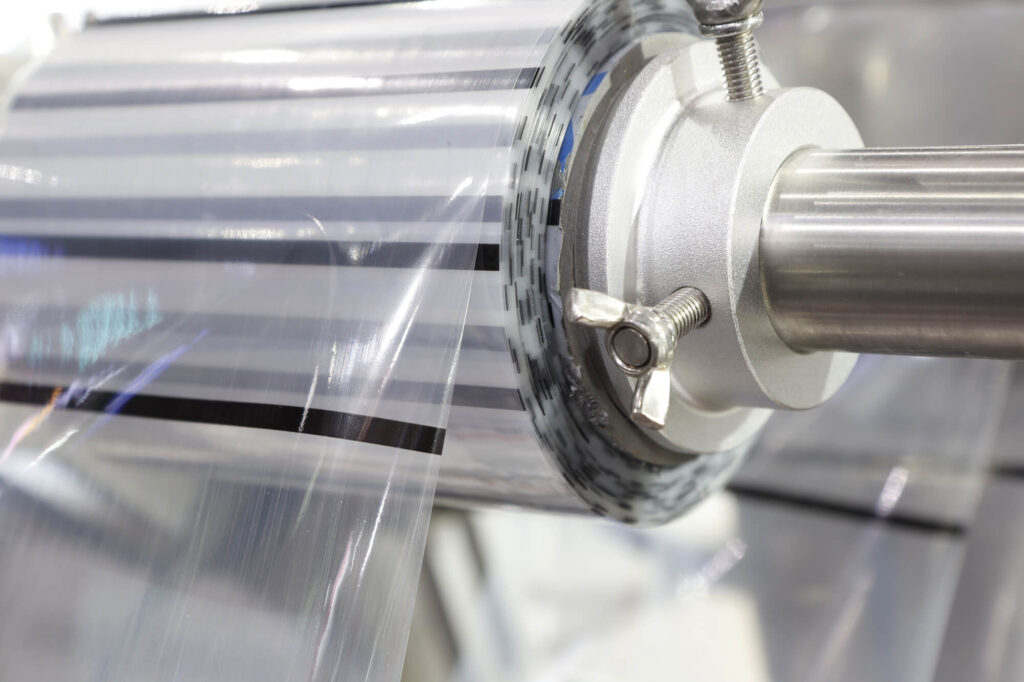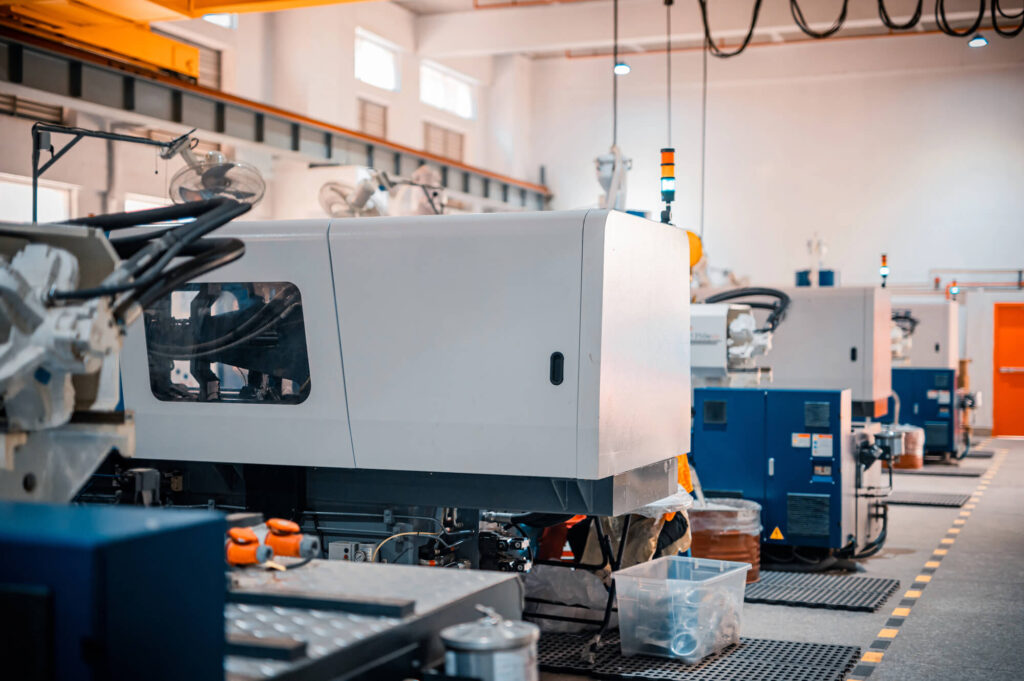From packaging and automotive parts to consumer electronics and medical devices, plastic products are woven into nearly every facet of modern life. The versatility, cost-effectiveness, and scalability of plastic manufacturing processes have led to domination in manufacturing. Yet, for innovators and product developers, turning an idea into a functional, high-performance plastic product requires more than simply choosing a mold.
Understanding the end-to-end plastic manufacturing journey, from raw material selection to mold design, prototyping, production, and finishing, empowers teams to make better decisions that enhance product performance, compliance, and sustainability. This guide lays out the complete pathway, illustrating the techniques, materials, and methods used to bring ideas to life through the lens of precision, efficiency, and technological innovation.
Step 1 – From Idea to Initial Design
Conceptualization and Feasibility
Every product starts with an idea. Whether it’s a new medical part, a mobile device component, or a consumer product, transforming a concept into a viable plastic product begins with feasibility assessments. This includes use-case analysis, market validation, and an early evaluation of the best-fit manufacturing methods, such as plastic injection molding, thermoforming, or 3D printing.
Design and Prototyping
The next phase involves computer-aided design software to produce a CAD model of the product. This model is not only critical for visualization but also informs downstream processes such as mold tool design and material compatibility. 3D printing and vacuum casting can be used for early-stage prototyping, especially for rapid iterations or functional validation. These prototypes allow teams to assess ergonomics, fit, and part function prior to entering the production phase.
Prototypes also allow validation for the behavior of the drying resin (plastic material), surface finish, and strength, reducing risks before full-scale molding.
Step 2 – Material Selection
Selecting the right plastic materials at this stage of the manufacturing process is essential. Thermoplastics, thermosets, silicone, and bioplastics each offer distinct properties based on additives, fillers, and their base resin types.
Understanding how different resins respond to environmental conditions like UV, temperature, and chemical exposure can define long-term product success.
Overview of the Two Most Used Engineering Plastics
Plastic materials most commonly used in the plastic manufacturing process are elastomers, which are a form of elastic polymers (plastics) that can stretch and be molded without breaking apart. They mostly fall into two primary categories: thermoplastics and thermosetting plastics.
- Thermoplastics such as polyethylene and polypropylene soften when heated and harden upon cooling, allowing them to be reshaped multiple times. This makes them ideal for plastic injection molding, extrusion blow molding, and thermoforming (a type of vacuum forming).
- Thermosetting plastics like epoxy, phenolic, and some urethane systems undergo a chemical change during curing, making them permanently rigid. They are often used in high-heat or structural applications.
These engineering plastics offer enhanced mechanical, thermal, or chemical resistance properties, making them ideal for aerospace, automotive, and medical parts where product performance is mission-critical.
Common Types of Elastomer Materials Used
- Polyethylene (PE) and Polypropylene (PP): These are among the most widely used due to their affordability and processability.
- Nylon: Excels in applications needing toughness and wear resistance.
- Acrylonitrile Butadiene Styrene (ABS): Favored for rigid parts that require impact strength.
- Polycarbonate (PC): Offers optical clarity and high strength.
- Polyvinyl chloride (PVC): This is used for both rigid and flexible applications, such as pipes, clamshells, and electrical insulation.
The Key Properties for Choosing Which Plastic Pellets
Choosing the right plastic resin involves evaluating:
- Mechanical strength
- Chemical resistance
- Temperature tolerance
- Environmental exposure
- Intended plastic forming method (injection molding, rotational molding, CNC machining, etc.)
Pellet form resins are also chosen based on factors such as:
- Viscosity
- Flow rate
- Whether they are hygroscopic materials that require drying before molding.
- Additives and colorants may be incorporated to enhance UV resistance, flame retardance, or aesthetic finish.
Understanding the base material at this stage supports design for manufacturability and sets the stage for successful mold design and tooling, which we’ll explore in the next section.

Step 3 – Mold Design and Tooling
Mold design is a cornerstone of scalable, repeatable plastic manufacturing. Whether the goal is short-run prototyping or high-volume production, a well-designed mold ensures dimensional accuracy, repeatability, and cost-efficiency. Poor mold design can lead to warping, sink marks, improper cooling, or even failed production cycles. This makes early collaboration between product designers and mold engineers essential.
Types of Molds
Different production goals demand different mold configurations.
- Multi-cavity: These are used for the simultaneous production of identical parts, maximizing efficiency.
- Family Molds: These, on the other hand, produce different parts in one cycle—ideal for product kits or assemblies.
- Hot vs Cold Runners: Hot runner systems maintain molten plastic inside the runner channels to reduce waste and cycle time, while cold runners are simpler and more cost-effective for small batches.
Additional decisions around ejector pins, cooling channels, cavity mold materials, and parting lines also directly influence cycle time and part quality.
Kenvox’s Expertise for In-House Tooling and Molds
Kenvox offers a vertically integrated mold fabrication service equipped with CNC machining, EDM, and coordinate-measuring machines (CMMs) to ensure tooling precision.
The company’s advanced mold-making capabilities allow it to support complex product geometries, insert molding, and multi-material configurations. With a focus on reducing lead times and improving tool longevity, Kenvox’s mold design process leverages digital simulation tools and strict quality control protocols at every step.
Step 4 – Core Plastic Manufacturing Techniques
Plastic manufacturing isn’t one-size-fits-all. Each method serves specific needs based on product complexity, batch size, material type, and cost efficiency. Below is a guide to the most widely used plastic forming techniques, including which plastic types they are best suited for.
Plastic Injection Molding
- Overview: The most common method for high-volume production. Molten plastic is injected into a metal mold under high pressure using an injection molding machine.
- Typical uses: Enclosures, medical parts, connectors, sensors, toys.
- Best plastics: ABS, PC, PP, PE, Nylon, TPU.
Plastic Extrusion Blow Molding
- Overview: Plastic powder or pellets is extruded into a parison and then blown into a mold cavity.
- Typical uses: Automotive fuel tanks, shampoo bottles, household jugs.
- Best plastics: LDPE, HDPE, PVC, PP.
Injection Blow Molding
- Overview: Combines injection and blow molding to create hollow plastic items.
- Typical uses: Bottles, containers, medical vials.
- Best plastics: PET (Polyethylene Terephthalate), HDPE, PP.
Thermoforming
- Overview: Plastic sheets are heated and shaped over molds by vacuum, pressure, or mechanical force.
- Typical uses: Packaging trays, clamshells, signage, consumer enclosures.
- Best plastics: PETG, HIPS, PVC, ABS.
Rotational Molding
- Overview: Powdered plastic is loaded into a mold, which is heated and rotated to coat the interior evenly.
- Typical uses: Storage tanks, large containers, playground equipment.
- Best plastics: LLDPE, HDPE, Nylon 12.
3D Printing (Additive Manufacturing)
- Overview: Plastic is deposited layer by layer using technologies like FDM, SLA, and SLS.
- Typical uses: Prototypes, low-volume parts, medical devices, UAV shells.
- Best plastics: PLA, ABS, Nylon, TPU, PETG.
CNC Machining (Subtractive Manufacturing)
- Overview: Plastic blocks are cut into shape using precision tools and automated milling machines.
- Typical uses: High-accuracy parts, functional prototypes, housing, molds.
- Best plastics: PEEK, PTFE, Delrin (Acetal), UHMW.
Each process offers trade-offs in terms of tooling cost, cycle time, surface finish, and scalability. Selecting the right method depends on your product requirements, tolerances, and budget. In the next section, we’ll explore how these raw parts are finalized through secondary processing and quality assurance.

Step 5 – Secondary Processes and Finishing
Towards the end of the plastic manufacturing process, the majority of the product has been molded, carved, injected, cut, or almost finished. However, there are still several secondary and finishing processes before the product is ready for the market.
Common Secondary Processes and Enhancements
After primary molding or machining, many plastic parts undergo post-processing to improve aesthetics, function, or durability.
- Painting and coating provide UV resistance and surface uniformity.
- Silk-screening and pad printing are used to apply labels, logos, or indicators.
- Ultrasonic welding joins plastic parts together without adhesives by using high-frequency vibration to create a molecular bond, which is commonly used in automotive, electronics, and medical components.
- Laser engraving allows for precise and permanent marking of designs or serial numbers on plastic surfaces, enhancing traceability and branding.
- Vacuum plating deposits a metallic layer on plastic parts, giving them a shiny, metallic appearance and improving surface hardness.
- Sand blasting provides a textured finish and removes imperfections, enhancing both the aesthetic and tactile qualities of plastic products.
Assembly
Plastic components often serve as part of a larger system. Kenvox supports semi-finished product integration and full assembly processes tailored to OEM specifications, which can include:
- Insert placement
- Sensor housing integration
- Sub-assembly bonding
- And more
Efficient, flexible production cells improve time-to-market and reduce handling risk across stages.
Quality Control
Maintaining part accuracy and functionality is essential. Quality assurance includes:
- Dimensional verification using coordinate-measuring machines (CMMs)
- Visual inspection with robotic automation or human oversight
- Functional testing as per design intent.
Kenvox employs automated process monitoring systems to reduce variation and ensure every part meets spec, reinforcing product integrity before delivery.
Always partner with contract manufacturers, like Kenvox, who offer a turnkey approach to the plastic manufacturing process. And by a turnkey approach, we mean true completion that involves final assembly, packaging, finishes, and even shipping and distribution.
Applications of Different Plastic Manufacturing Methods by Industry
Plastic materials are in every single major industry in the global economy and are a common sight in everyday life. However, the most effective way to visualize how all these plastic manufacturing methods can help your product dreams is by knowing how they already serve real-world sectors like automotive, medical, and consumer electronics.
Automotive
Plastic injection molding, extrusion, and ultrasonic welding are widely used in automotive manufacturing. Applications include:
- Dashboards
- HVAC vents
- Fluid reservoirs
- Sensors
- Clips
High-performance materials like nylon and PEEK are valued for their heat resistance and mechanical strength in engine bay and underhood parts.
Medical
Medical device manufacturing demands precise tolerances, regulatory compliance, and biocompatible materials, which is why this industry relies mostly on plastic injection molding and 3D printing. These methods support components like:
- Surgical tools
- Diagnostic housings
- Single-use consumables.
Cleanroom assembly and visual inspection protocols are crucial.
Consumer Goods
Rotational molding, blow molding, and thermoforming are used to produce plastic:
- Containers
- Toys
- Furniture.
Design flexibility and surface finish are important here, often requiring secondary decoration and color matching.
Electronics
Plastics in electronics serve as:
- Enclosures
- Keypads
- Wire insulators
- Internal structural supports.
- Structures for Unmanned Aerial Vehicles (UAV)
Injection molding is used for high-precision parts, while CNC plastic machining can support limited-run production or complex prototypes.
Household & Industrial
Thermoforming and injection molding are key for producing:
- Buckets
- Bins
- Lids
- Casings
- Industrial housings
Durability and cost-effectiveness are essential for high-volume production, with polypropylene and polyethylene being popular choices.

Plastic Manufacturing Services at Kenvox
Kenvox offers end-to-end plastic manufacturing services, including plastic injection molding, mold design and fabrication, rapid prototyping, and post-processing. With deep expertise across a range of forming techniques, Kenvox tailors production processes to each project’s regulatory, functional and aesthetic requirements.
Capabilities
Equipped with state-of-the-art injection molding machines, Kenvox supports both high-volume manufacturing and short-run assembly. In-house resources include:
- Cleanroom manufacturing
- Drying stations for hygroscopic materials
- ERP-integrated traceability
- Quality control via automated monitoring systems and coordinate-measuring machines (CMMs).
Project types
Kenvox works with OEMs and startups alike, supporting diverse project scopes—from prototyping and pilot runs to full-scale production and final assembly.
The company manufactures parts for automotive, medical, consumer, and industrial sectors, delivering reliable sourcing and high-performance plastic components that meet stringent international quality standards.
Sustainability and Trends in Plastic Manufacturing
The plastic manufacturing industry is undergoing a transformation driven by sustainability mandates and technological advancements.
- Sustainable Raw Materials: Bio-based polymers and biodegradable plastics are now viable alternatives to petroleum-based resins, helping reduce dependency on crude oil and natural gas.
- Waste Reduction Technology: Innovations in robotic automation, real-time process control, and smart injection molding systems have led to reduced cycle time, improved precision, and lower plastic waste.
- Closer Supply Chains: Emerging manufacturing models like nearshoring are reshaping global supply chains. By bringing production closer to consumption centers, companies reduce their carbon footprint and improve logistics efficiency, enhancing sustainability from a systems-thinking perspective.
- Recyclability and Circular Economy: More manufacturers are adopting a cradle-to-cradle mindset, where products are designed with end-of-life reuse or recycling in mind. This includes selecting raw materials and resins that align with established recycling codes, integrating post-consumer recyclates into production lines, and minimizing additives that hinder biodegradation. Lifecycle assessments and environmental compliance auditing are increasingly essential in plastic product development.
Kenvox supports customer sustainability goals by helping clients choose recyclable materials, design for disassembly, and reduce material usage through optimized part geometry.
Turning Concepts into High-Performance Plastic Products
From concept sketches to precision-molded assemblies, plastic production is a sophisticated blend of science, design, and engineering. Choosing the right manufacturing technique—whether it’s injection molding, extrusion, or CNC machining—requires a clear understanding of product requirements, material science, and overall process flow.
In the moulding industry, success depends on aligning the raw material with the right machine and method. For example, polymers such as polypropylene or bioplastic are often selected for their durability, versatility, and environmental impact. The selection process also considers whether the part will be fabricated in bulk, formed from sheet material, or made using thermoset resin for added strength.
A simple drawing may evolve into a complex engineering project, where chemical composition, starch-based alternatives, or different resin types influence manufacturability. Each stage of fabrication reflects not only precision but also market demand, ensuring that products meet performance standards while remaining cost-effective.
Ultimately, plastic manufacturing integrates engineering expertise with material knowledge to transform raw polymers into functional designs, supporting innovation across industries with solutions tailored to both technical and commercial needs.
Looking to bring your plastic product concept to life? Connect with Kenvox today to explore a custom solution tailored to your industry, performance, and sustainability goals.



